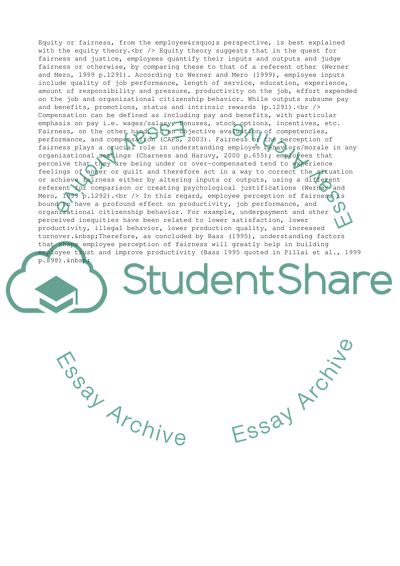Cite this document
(Factors Influencing Employee Perception of Fair Compensation Essay, n.d.)
Factors Influencing Employee Perception of Fair Compensation Essay. Retrieved from https://studentshare.org/management/1537642-equity-or-perceived-fairness-of-compensation-from-the-perspective-of-the-employee
Factors Influencing Employee Perception of Fair Compensation Essay. Retrieved from https://studentshare.org/management/1537642-equity-or-perceived-fairness-of-compensation-from-the-perspective-of-the-employee
(Factors Influencing Employee Perception of Fair Compensation Essay)
Factors Influencing Employee Perception of Fair Compensation Essay. https://studentshare.org/management/1537642-equity-or-perceived-fairness-of-compensation-from-the-perspective-of-the-employee.
Factors Influencing Employee Perception of Fair Compensation Essay. https://studentshare.org/management/1537642-equity-or-perceived-fairness-of-compensation-from-the-perspective-of-the-employee.
“Factors Influencing Employee Perception of Fair Compensation Essay”, n.d. https://studentshare.org/management/1537642-equity-or-perceived-fairness-of-compensation-from-the-perspective-of-the-employee.


